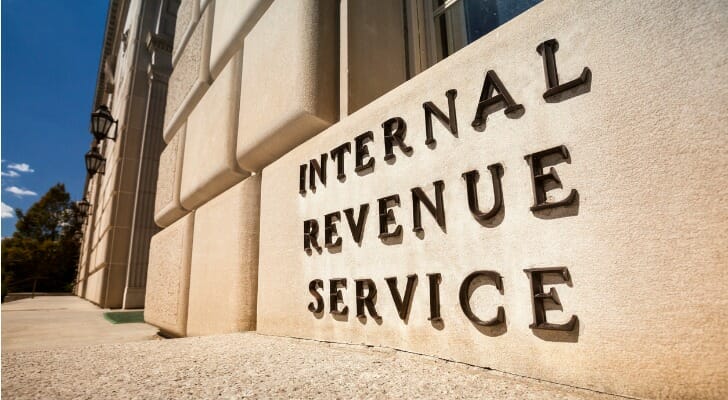 When someone passes away, what the person passes down to his or her beneficiaries may be subject to federal estate taxes. If the decedent “skips” a generation in passing along assets then it may trigger a tax bill. IRS Form 706 is used to calculate the potential tax liability from these so-called generation-skipping gifts. In this article, we’ll define what Form 706 is, explore how to calculate taxes owed and explain how to file the form.
When someone passes away, what the person passes down to his or her beneficiaries may be subject to federal estate taxes. If the decedent “skips” a generation in passing along assets then it may trigger a tax bill. IRS Form 706 is used to calculate the potential tax liability from these so-called generation-skipping gifts. In this article, we’ll define what Form 706 is, explore how to calculate taxes owed and explain how to file the form.
Consider working with a financial advisor if you need help with your taxes in relation to investments or estate planning.
What Is IRS Form 706?
IRS Form 706, officially known as the United States Estate (and Generation-Skipping Transfer) Tax Return, is used to report the value of a deceased person’s estate to the federal government. The form determines whether any federal estate taxes are owed and calculates the tax due on the transfer of assets to heirs. It also helps track how much of the estate tax exemption has been used, which can affect a surviving spouse’s ability to claim any unused portion of that exemption.
Form 706 is typically filed by the executor or personal representative of an estate when the total value exceeds the federal estate tax exemption limit in effect at the time of death. For deaths occurring in 2025, that threshold is $13.99 million per individual, or $27.98 million for married couples when combined. Even if no tax is due, some estates file the form voluntarily to preserve “portability,” allowing a surviving spouse to carry over any unused exemption.
The form requires detailed reporting of all assets the deceased owned or controlled at the time of death. This includes real estate, investments, business interests, life insurance proceeds, retirement accounts, and personal property. It also accounts for debts, funeral expenses, charitable donations, and administrative costs, which can reduce the taxable value of the estate.
IRS Form 706 ensures transparency and proper taxation in the transfer of wealth between generations. Filing it correctly can help avoid IRS disputes, protect heirs from unexpected tax liabilities, and preserve valuable estate tax benefits for surviving spouses. Because the form is lengthy and complex, most executors work with an estate attorney or tax professional to ensure it’s completed accurately and on time.
How to Calculate the Value of an Estate
Calculating the value of an estate for IRS Form 706 starts with identifying and appraising all assets the deceased owned or had an interest in at the time of death. This includes real estate, bank and investment accounts, business interests, vehicles, personal property and life insurance proceeds payable to the estate. The total of these items is known as the gross estate. Each asset must be valued at its fair market value, what a willing buyer would pay a willing seller, on the date of death or an alternate valuation date, which can be up to six months later if it lowers the overall estate value or tax liability.C
So, you’ll need to combine the following numbers and compare them against the estate tax exemption limit to determine if you must file an estate tax return.
- Value of the decedent’s estate at the time of death. This is the gross value of the estate. No adjustments are made for liabilities (aka net worth).
- Taxable gifts made by the decedent that exceeded the annual gift tax exclusion after Dec. 31, 1976.
- Total specific exemption allowed under Section 2521 for gifts made after Sept. 8, 1976.
Even if no federal estate taxes are owed, Form 706 must be filed if the gross value of the estate is more than the exemption limit.
Who Must File Form 706?
Form 706 is filed on behalf of a deceased person whose gross estate, specific exemptions and adjusted taxable gifts are higher than the estate tax exemption limits. Usually, this form is filed by the executor of the estate.
When does it need to be filed?
IRS Form 706 must generally be filed within nine months of the date of the decedent’s death. This deadline applies to the executor or personal representative of the estate, who is responsible for preparing and submitting the return. If more time is needed, the executor can request an automatic six-month extension by filing IRS Form 4768 (Application for Extension of Time to File a Return and/or Pay U.S. Estate Taxes) before the original nine-month deadline.
Payments for taxes due for Form 706
Taxes owed are also due within nine months of the date of the decedent’s death. You may elect to pay the taxes in installments if you cannot pay all at once. Payments may be made by check payable to “United States Treasury” or electronically through the Electronic Federal Tax Payment System (EFTPS).
How to file an extension for estate taxes
If you are unable to file or pay your tax liability by this deadline, you may request an extension by submitting Form 4768. This form provides an automatic six-month extension to file Form 706.
Where to file Form 706
Form 706 cannot be filed electronically. This form must be printed out and mailed to:
Department of the Treasury
Internal Revenue Service
Kansas City, MO 64999
IRS instructions for Form 706 provides additional addresses if you are using a private delivery service or filing an amended form.
Reducing Estate Taxes and GSTs
Instead of waiting until you pass away to give money to your beneficiaries, you can help them out while you’re still alive. Certain payments are excluded from taxes and will not affect your lifetime gift exemption.
- Annual gifts: You and your spouse are both eligible to give up to $15,000 per year (2021 limits) to each individual person. Recipients do not have to be related to you. This annual gift limit is adjusted for inflation every year. For a couple with a married child and two grandchildren, each person can gift a total of $60,000 each year (a total of $120,000 for the couple). That would be $15,000 each to their child, spouse and two grandchildren.
- Paying tuition: When you pay tuition directly to the institution, these amounts are given without affecting estate or gift taxes. This exemption only covers tuition. Room and board, supplies, books and other costs are not eligible.
- Covering medical expenses: Paying medical expenses directly to the provider or medical facility can be done without affecting estate taxes or triggering gift taxes.
Form 709: When Gifts Exceed the Annual Limit
 While the annual gift limit allows you to give up to $19,000 (2025 limit) to anyone without triggering a gift tax, you can actually give more than that if you like. Examples of larger gifts include a down payment for a child’s house, funds deposited into a 529 Plan, or forgiving a loan that you’ve made.
While the annual gift limit allows you to give up to $19,000 (2025 limit) to anyone without triggering a gift tax, you can actually give more than that if you like. Examples of larger gifts include a down payment for a child’s house, funds deposited into a 529 Plan, or forgiving a loan that you’ve made.
For gifts that exceed $19,000, you must file Form 709 with your annual tax returns. Making a gift that exceeds this limit does not mean that you’ll owe gift taxes. Instead, this form keeps track of the taxable gifts you’ve made during your lifetime. These excess amounts above the annual gift limit are subtracted from your lifetime estate tax and GST exemption limits when you pass away.
However, if you gift something to someone for less than its fair market value, you may owe gift taxes on Form 709. For example, let’s say that you transfer a home to your child for less than its value. You would owe gift taxes on the difference between the property’s fair market value and what was actually paid.
Bottom Line
 High-valued estates and gifts that skip a generation may require a Form 706. This form determines whether or not federal taxes are owed on a decedent’s gifts to beneficiaries. Strategic planning with a financial advisor and certain eligible gifts throughout your lifetime can help to reduce the impact of estate and gift taxes owed. Additionally, these forms may be complicated for the average person. Involving a tax advisor is a prudent step to avoid incorrectly filling out the form and triggering an unnecessary tax bill.
High-valued estates and gifts that skip a generation may require a Form 706. This form determines whether or not federal taxes are owed on a decedent’s gifts to beneficiaries. Strategic planning with a financial advisor and certain eligible gifts throughout your lifetime can help to reduce the impact of estate and gift taxes owed. Additionally, these forms may be complicated for the average person. Involving a tax advisor is a prudent step to avoid incorrectly filling out the form and triggering an unnecessary tax bill.
Tips on Tax Filing
- Investors should strongly consider working with a financial advisor to develop plans to mitigate the effect of estate taxes on their portfolios. Such advisors can provide guidance and offer solutions that are customized to your specific situation. Finding a financial advisor doesn’t have to be hard. SmartAsset’s free tool matches you with vetted financial advisors who serve your area, and you can have a free introductory call with your advisor matches to decide which one you feel is right for you. If you’re ready to find an advisor who can help you achieve your financial goals, get started now.
- Inflation can be a hidden enemy of fixed income investors. Our inflation calculator helps investors understand how rising costs can impact the buying power of their money over time.
Photo credit: ©iStock.com/skynesher, ©iStock.com/ridvan_celik, ©iStock.com/Pgiam